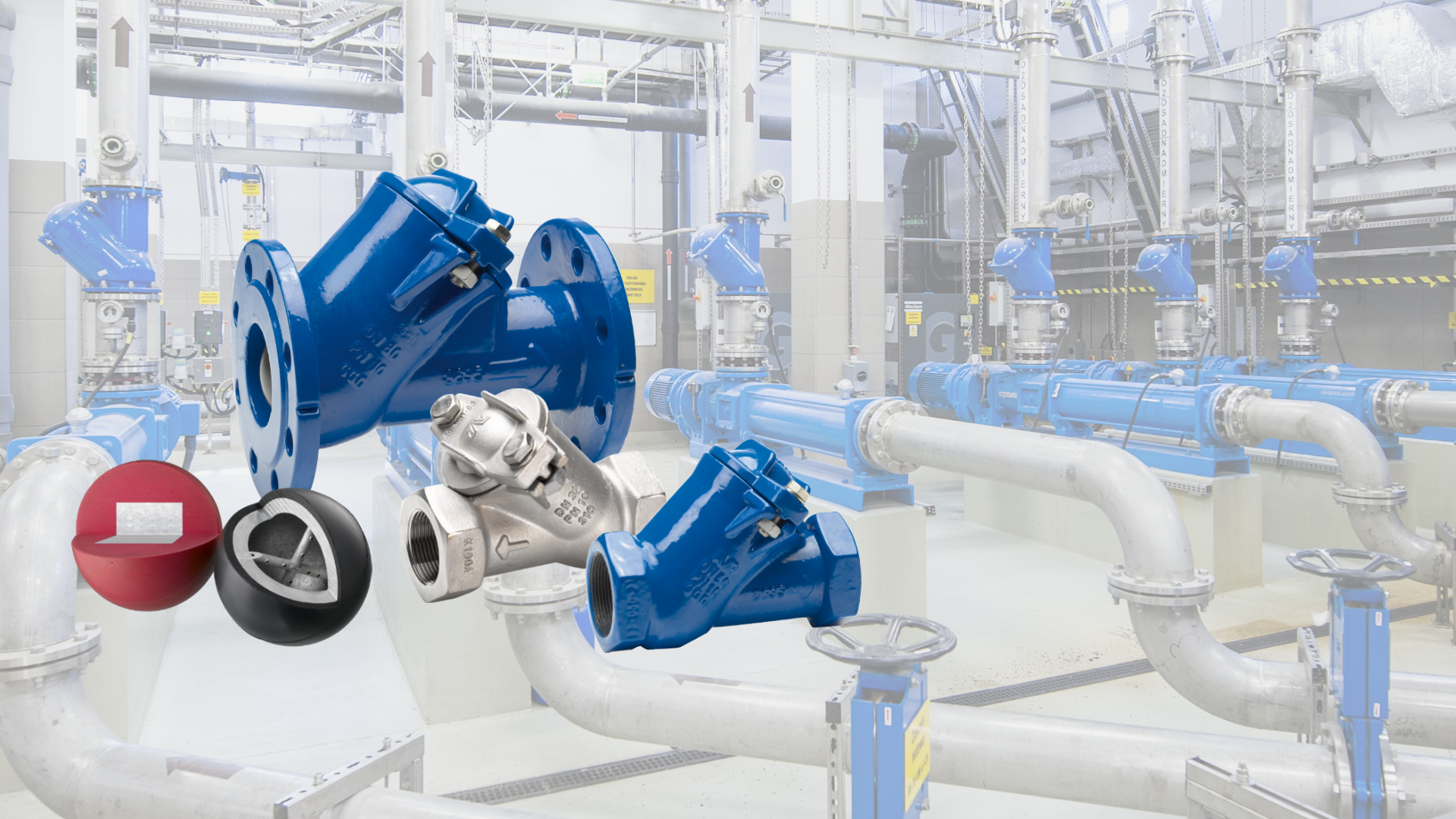
Ball check valves
AVK offers ball check valves in DN 32-600 with NBR lined ball as standard and with polyurethane balls for abrasive media or when different ball weights are needed to prevent noise and water hammer. They can be installed in both horisontal and vertical positions.
What is a ball check valve?
A ball check valve functions by means of a ball that moves up and down inside the valve. The seat is machined to fit the ball, and the chamber is conically shaped to guide the ball into the seat to seal and stop a reverse flow.
If the pump capacity is not sufficient it is possible to choose a lighter ball, and if water hammer occurs when the pump stops, it may be solved by selecting a heavier ball.
Ball check valves are often preferred for use in pumping stations that are rarely attended, since they demand only limited maintenance, typically if the ball makes noise caused by insufficient pump capacity or water hammer.
AVK ball check valves
AVK ball check valves are self-cleaning, as the ball rotates during operation which eliminates the risk of impurities getting stuck on the ball. The standard ball is designed with a NBR rubber lined metal core, and the rubber hardness is optimized to prevent the ball from getting stuck in the seat. Balls of polyurethane are suitable for abrasive media and when different balls weights are needed to prevent noise and water hammer. A full and smooth bore ensures full flow with low pressure loss and eliminates the risk of deposits at the bottom that could prevent tight closure.
AVK ball check valves are available in ductile iron with epoxy coating internally and externally with flanges in DN 50-600 and with internal BSP threads in DN 32-50. Furthermore, in DN 32-80 they are also available in stainless steel AISI 316 for installation in aggressive surroundings.
Feature summary
Self-cleaning construction
Full and smooth bore ensures low head loss
Tightness at minimum back pressure
Polyurethane balls available for abrasive media
Different ball weights available
In ductile iron or acid-resistant stainless steel
Available up to DN 600
Typical problems - and how to avoid these with the right ball check valves:
Water hammer effect: use a + 20 % ball weight
Vibrations and resonance from the valve: use a - 20 % ball weight
The ball getting stuck in the seat: use min. shore 60 rubber on the ball or use metal core in the ball



